How you water your native landscape is critical to your garden’s success. Plants native to your area evolved in your local conditions and often require less water than their nonnative counterparts, depending on where you live. In drought-stricken Southern California, our native flora evolved numerous adaptations to cope with our hot, dry summers and the cooler — and hopefully wet — winters, which is the definition of a Mediterranean climate. When timed correctly, small amounts of water in drought-tolerant landscapes can help keep plants looking verdant year-round.
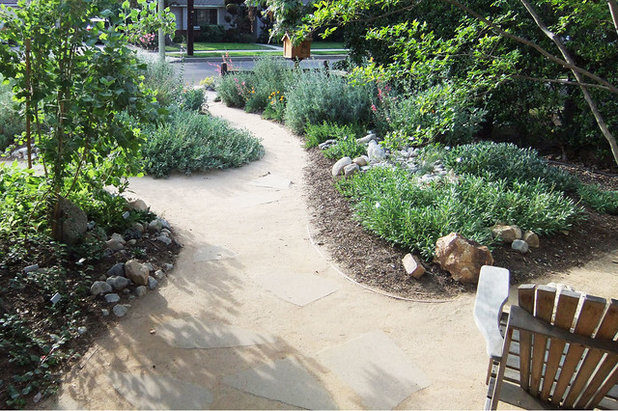
Theodore Payne Foundation
This native garden in Los Angeles gets watered by hand.Good watering practices require a combination of research and some hands-on trial and error. I recommend finding your local native garden nursery and education center, and starting there for information.
It’s also beneficial to cluster plants by their watering needs. For example, your less thirsty native bunch grasses and sun-loving native flowering shrubs might be grouped near one another, which conveniently follows a golden design rule of drifts and masses, or clusters, of the same plant repeated throughout a landscape. Your thirstier fruit trees might be clustered closer together, which makes it easier to water them by hand or set them on a longer-lasting watering zone on your irrigation controller.
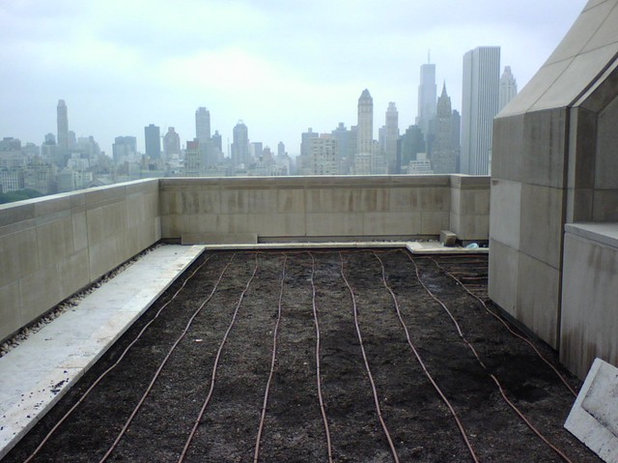
RR Irrigation
Drip irrigation is installed on a New York rooftop.Here are some basic watering practices that can be done by hand or that you can try programming into your irrigation controller.
Ideally, your irrigation system is sophisticated enough (or simple enough, in the case of good old-fashioned hand watering) that you aren’t watering your landscape in the rain.
1. Consider soil and exposure. Determine your soil type before creating a watering schedule. Heavy clay soil holds water much longer than sandy or silty soil. How much sun or shade an area receives also influences watering needs.
2. Pay careful attention to your new plantings for the first six months to a year. Baby plants require more water until they become established and reach their mature size. Allow the soil to dry out between waterings — only two to three days at first and then slowly increasing that time over many months. Consider that each time the soil dries out, the root system extends a bit more, reaching for water and growing in the process. If you stress the plant too much, however, it will die.
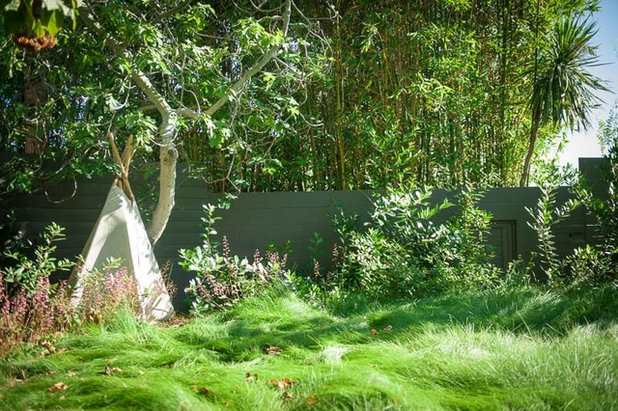
Oakley Gardens
This Southern California garden, which includes a native grass lawn and native border plants, is watered entirely by a subsurface drip irrigation system connected to a Wi-Fi-enabled smart irrigation controller.3. Water each plant type so it will thrive.- Trees and large shrubs need deep but infrequent waterings. Imagine watering with the hose on a bare trickle for four or more hours — depending on how tall your tree is — once or twice a month. This allows water to slowly percolate down into deeper soil layers, which is where you want to encourage your tree or large shrub’s root system to develop. Fast, shallow waterings have the opposite effect. The rule of thumb is the larger the tree or shrub, the deeper and less frequent the waterings.
- Medium-size shrubs 4 to 5 feet high also benefit from infrequent slow soakings. Imagine the hose on a slow trickle that waters the root system of your shrubs for one to two hours every two to three weeks.
- Ground covers and grasses have shallower root systems and need frequent short waterings. The frequency and duration of the waterings depend on the weather and how long your soil retains moisture. In hot, dry summer months, if using a sprinkler system, you may need to water ground covers as much as five minutes every other day to keep them lush. Drip irrigation systems typically emit less water than sprinklers, so you’d want to increase that to closer to 20 minutes. You’ll want to do some math and figure out how many gallons of water your irrigation system emits, and calculate your watering times based on that information, as well as soil type and hours of sun.
- Succulents and cactuses are another matter entirely. They store water in their leaves and therefore benefit from small amounts of water applied infrequently to remain happy. For mature cactus and succulent species, you may be able to get away with watering just once a month in hot summer months. Going back to the example of a hose on a slow trickle, I’d leave it at the base of a mature blue agave in well-draining soil for 20 to 30 minutes once a month.
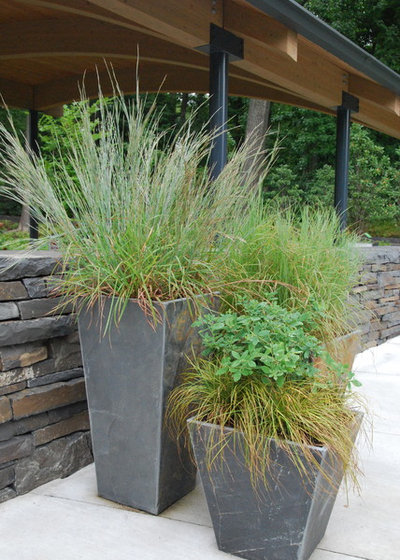
Paintbox Garden
Eastern native grasses greet visitors to the New York Botanical Garden’s Native Plant Garden, designed by Oehme, van Sweden Landscape Architects.- Container plants require regular water. The root system is constrained to the size of the planter, and roots aren’t able to spread out wide and deep to find water. In Southern California, I water my larger containers of native plants one or two times a week, depending on the heat. I use my index finger to feel down 2 inches into the pot and see if the soil is dry or not. Ideally, the soil dries out for a day or two at most. I can also tell if a plant is thirsty by noticing if the leaves are starting to curl.
See how and when to water potted plants
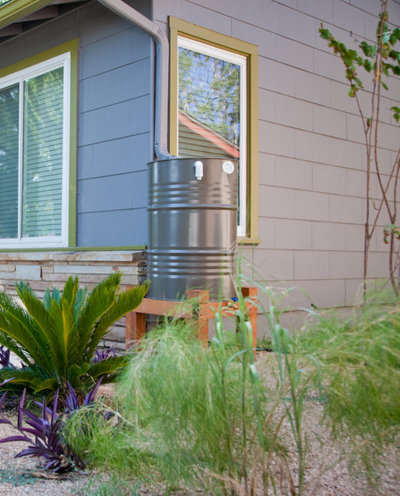
Native Edge Landscape
4. Consider watering with rainwater. Capturing and saving rainwater to irrigate your landscape can be a wonderful way to reduce your water bills, minimize stormwater runoff from your property and connect with the seasons, since you’ll store water that accumulates during the wetter months to use in the drier months.
Homeowners essentially have two options: connecting a hose and watering by hand from rain barrels or cisterns, or tying the captured water into an automatic irrigation system. This approach requires expertise and is best done by a professional.
Watch how to install a rain barrel
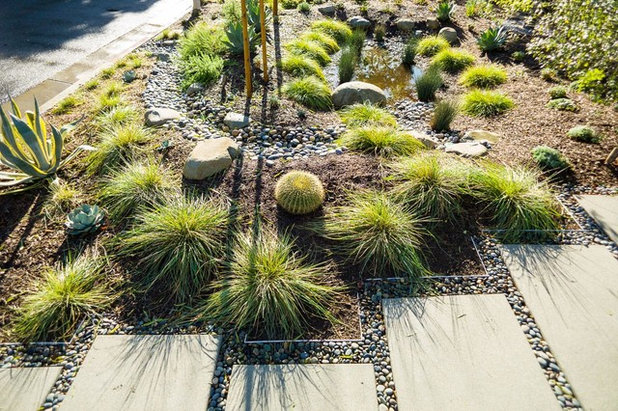
Theodore Payne Foundation
5. Design the landscape to capture water. This sloping front yard by Tom Rau Landscape Architecture was sculpted into a rain garden. You can see where water pools after a rain. This ephemeral pond space has underground catchment that allows water to slowly infiltrate back into the soil. Every inch of this garden was created with permeability in mind, meaning that rainwater has numerous ways to percolate into the soil. The drought-tolerant palette of succulents, cactuses and grasses means the homeowners have to water by hand only minimally during the hotter, drier months of the year.





